To what does this standard apply?
Since 1 January 2004, EU standard EN 13155 applies to the manufacture of loose items of lifting equipment. This standard is intended to provide a uniform minimum level of operational safety for loose items of lifting equipment. In other words, all loose items of lifting equipment that entered service after 1 January 2004 are required to comply with this standard.
A vacuum lifter on a crane hook is referred to as a loose item of lifting equipment. In other words, this standard only applies to auxiliary devices that can be suspended from a crane hook or similar device. This standard and the specified safety standard do not apply to vacuum lifters that are rigidly connected to a lifting system or chassis unit that constitutes a fixed part of this machine. Chassis units with a lifting device such as so-called ‘glass robots’ are not required to comply with this safety standard. However, this statement should not always be taken at face value. Anyone using a device of this kind simply to transport a single glass pane should refer to EU standard EN 13035 Parts 1 & 2. The most recent draft version of this standard stipulates compliance with EN 13155, also for machines of this kind.
But why is this standard so important, even for the older kinds of vacuum lifter that are already in service?
In simple terms, in Germany the Workplace Safety Directive of 1 June 2015 stipulates a retrofit to comply with the modern safety standard (state-of-the-art technology). And this Workplace Safety Directive is directed at the operator and not at the manufacturer.
So then why is this standard such an important one?
What constitutes ‘state-of-the-art technology’?
This EU standard describes what constitutes state-of-the-art technology or, more accurately, it provides the basis for it. Which means that, if a vacuum lifter is required to achieve the standard of state-of-the-art technology, it is required at the very least to comply with the corresponding standard from 2004. So please take careful note of the fact that there is no longer any legacy protection for old inventory. The vacuum lifter should at least comply with this standard to enable the person responsible to sleep with a clear conscience. Failing which, the equipment infringes the workplace safety directive . In the event of a damage incident, claims may be made against the person responsible!
This is why, when carrying out maintenance work, we check carefully that the vacuum lifters comply fully with these features from EU standard EN 13155, to ensure that you can then work with a safe vacuum lifter. This will enable you to avoid workplace accidents.
Reactions to this can extend to a failure to understand quite why something that was considered to be just fine a few years ago can now be deemed unable to comply with modern requirements. Of course, not every inspect shares the same point of view about these things. For that reason, we are providing you here with a benchmark against which you can evaluate the situation for yourself.
What really needs careful consideration?
Here is our translation of the individual points:
5.2.2.1 – (for the actual text of this standard, please refer to the current edition of EN 13155):
The device must be able to hold double the stated weight in any position from the start of the working area.
- Example: According to the manufacturer, the device has a load capacity of 500 kg. In order to comply with the standard, the device must be able to hold a load of 1000 kg.
5.2.2.2 – (for the actual text of this standard, please refer to the current edition of EN 13155):
The vacuum lifter with a vacuum pump / injector must have a control vacuum meter.
The operating range and danger area must be clearly marked.
This applies to every single vacuum circuit.
Here is something that often gets overlooked: on vacuum lifters with an injector on every suction cup, each suction cup constitutes its own vacuum circuit and must comply with this stipulation.
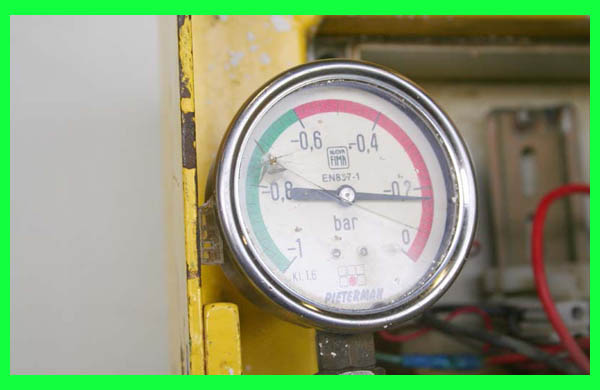
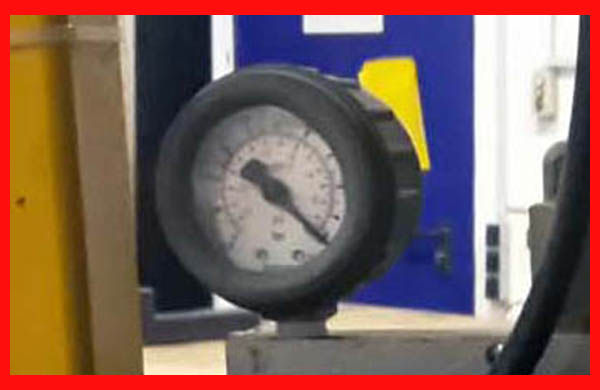
5.2.2.3 – (for the actual text of this standard, please refer to the current edition of EN 13155):
This section refers to vacuum lifters with their own suction capability and is not dealt with here.
5.2.2.4 – (for the actual text of this standard, please refer to the current edition of EN 13155):
The control vacuum meter should always be visible to the operative or crane driver. A stipulation that is usually not complied with because in some cases, this is simply impossible in a practical context.
On his way up, working on a multi-storey building, imagine how difficult it must be for the crane driver to be able to see the control vacuum meter at all times. Or on a rotational device, those cases where the vacuum meter may get concealed by the suspension rod.


5.2.2.5 – (for the actual text of this standard, please refer to the current edition of EN 13155):
a)
On vacuum lifters with vacuum pump, a vacuum reservoir should be attached to compensate for vacuum losses. For this, the vacuum reservoir should be equipped with a non-return valve that can maintain a vacuum in the event of failure of the vacuum generation function.
b)
On vacuum lifters with an injector, a pneumatic reservoir or a vacuum reservoir should be attached to compensate for vacuum losses.
For this, the vacuum reservoir should be equipped with a non-return valve that can maintain a vacuum in the event of failure of the vacuum generation function.
Alternatively, a pneumatic reservoir can supply the device with sufficient compressed air to enable the load to be maintained for at least 5 minutes.
c) and d) are not considered here in greater detail.
Even if this stipulation with the reservoir does not deliver great safety, the loss of power should never cause the load to be released from the vacuum lifter. This is a very important function, even though no vacuum balancing can occur in this scenario.
Consequently, a non-return valve or similar device needs to be fitted!
Here is something that often gets overlooked: on vacuum lifters with an injector on every suction cup, each suction cup constitutes its own vacuum circuit and must comply with this stipulation.
5.2.2.6 – (for the actual text of this standard, please refer to the current edition of EN 13155):
According to requirement a control vacuum meter alone is not sufficient. The device must also feature a visual or acoustic warning signal to warn of danger if the vacuum is too weak.
In addition, there must be an additional vacuum switch, which also operates the signal.
An important factor is that this warning signal must also work in the event of a power failure or the warning must already have cut in at the point where power fails.
Here is something that often gets overlooked: on vacuum lifters with an injector on every suction cup, each suction cup constitutes its own vacuum circuit and must comply with this stipulation.
5.2.2.7 – (for the actual text of this standard, please refer to the current edition of EN 13155):
This stipulation is very unambiguous. The vacuum lifter must be able to hold the load for 5 minutes in the event of a power failure. This applies to the normal application where an employee is in the vicinity and where the working area is not particularly well secured.
The only point that is not defined is the weight of the load. Does this involve the nominal rating or double the nominal rating?
5.2.2.8 – (for the actual text of this standard, please refer to the current edition of EN 13155):
This requirement for an increased level of safety must be respected on building sites or in confined areas where users cannot remain at a distance from the device.
It isn’t possible to use a second positive-connection retaining fixture as this must be used from the beginning until the end of the movement and must be implement before lifting, and removed after the lift is complete.
In this case, a vacuum lifting device with multiple vacuum circuits is needed. The device must be able to support double the nominal rating, even if a vacuum circuit cuts out!
5.2.2.9 – (for the actual text of this standard, please refer to the current edition of EN 13155):
Switching over to the RELEASE status should simply involve a 2-stage actuation.
A 1-stage actuation, for example the pressing of a button or the adjustment of a hand lever, is prohibited!
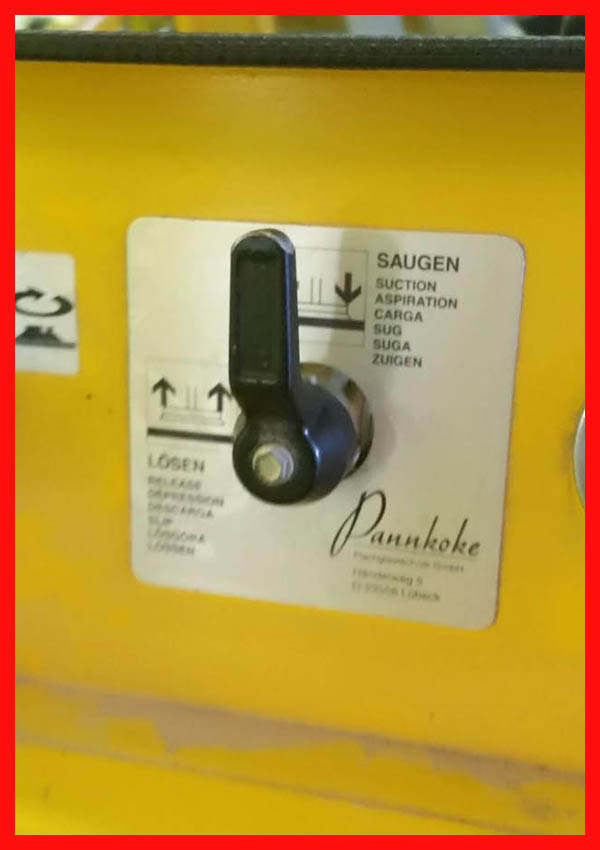
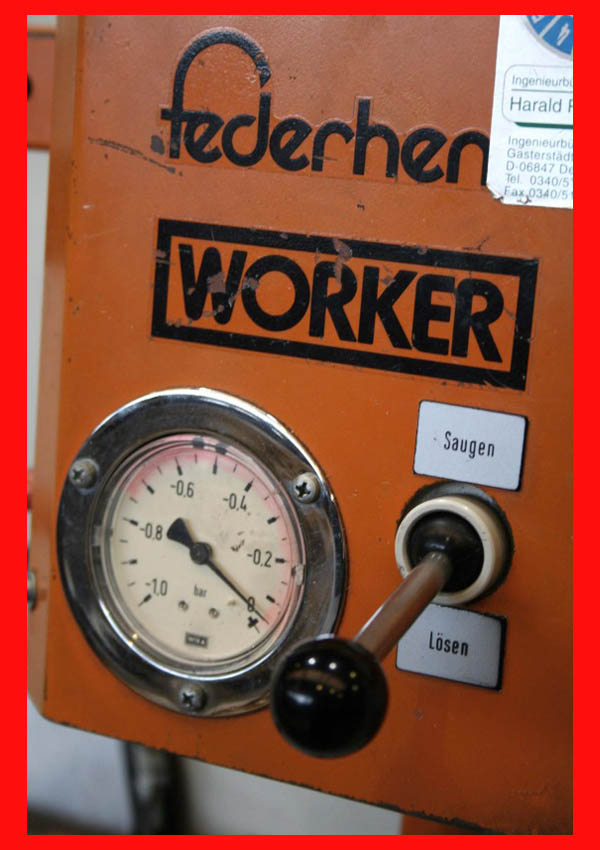
The simultaneous actuation of 2 buttons or the actuation of a hand lever with 2 sequences of movement is permitted!
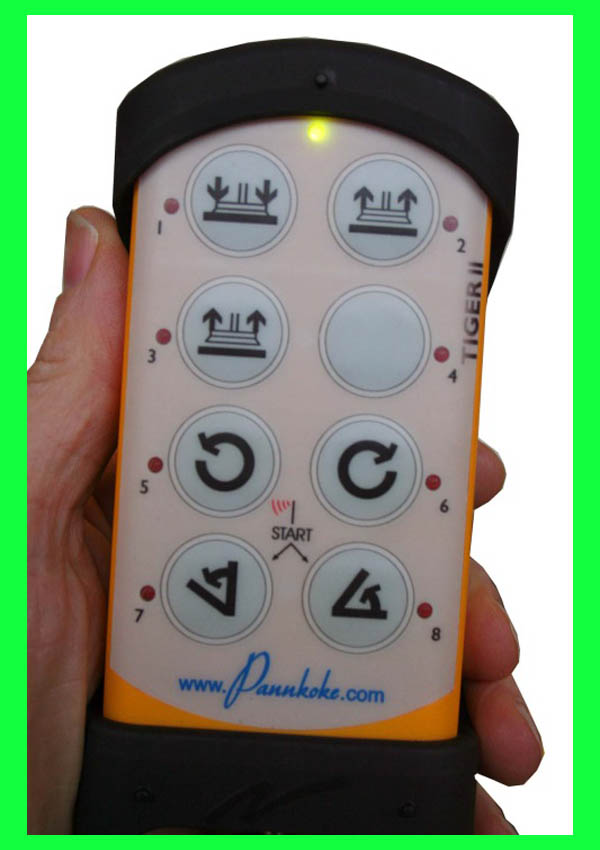
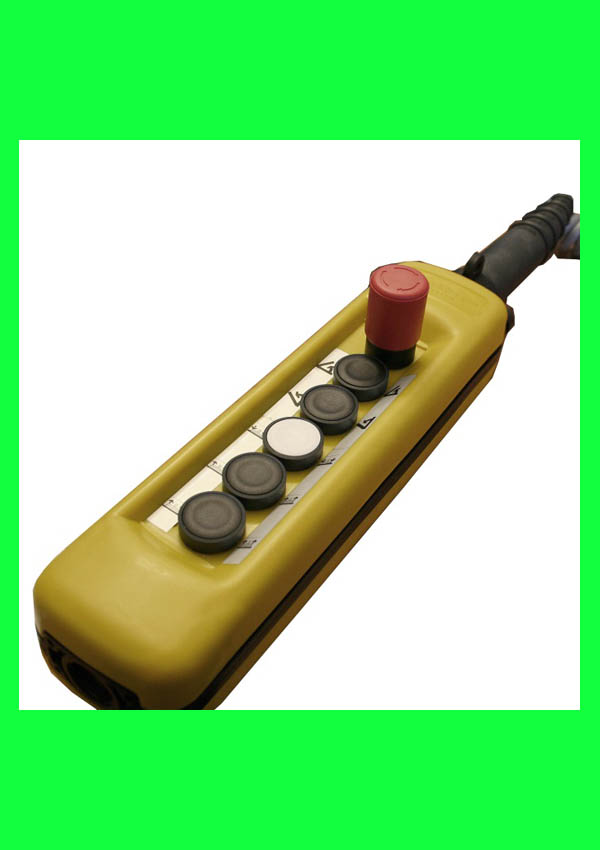
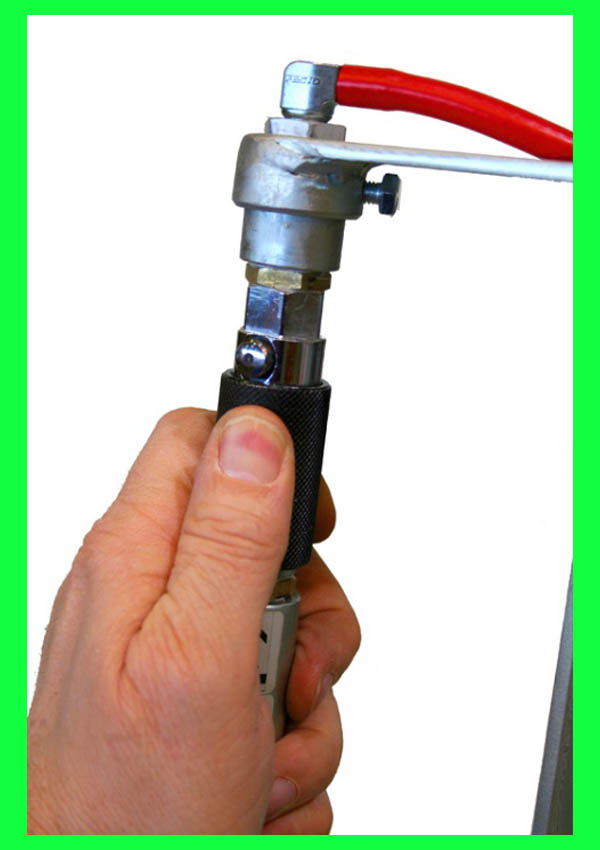
5.2.2.10 – (for the actual text of this standard, please refer to the current edition of EN 13155):
Specific authorisation is required before using the control unit for rotational and tilting movements. Movements of this kind can only be carried out if a button is pressed, or some similar action is performed.
Manual engagements must be released actively and must re-engage automatically.
It is prohibited to move a valve lever, change the position of a switch, release a mechanical interlock, or to perform any similar action.
It is OK to actuate a button for a powered movement.
It is OK to pull a cable or to press down on a hand lever to release a mechanical interlock that can re-engage automatically.It is OK to pull a cable or to press down on a hand lever to release a mechanical interlock that can re-engage automatically.
Our advice
- Check your vacuum lifter for the points listed above.
- Retrofit old devices accordingly.
- Never forget the type plate, which is also important.
Is it present?
Are the data correct?
Is the manufacturer shown to have an address in the EU?
Is the corresponding Conformity Declaration present? - We offer to test your device and to provide you with a few useful tips.
If you so wish, we can also provide on-site training for your employees.
This can help you to prevent workplace accidents.
Your personal safety and that of your payroll staff is at stake!
